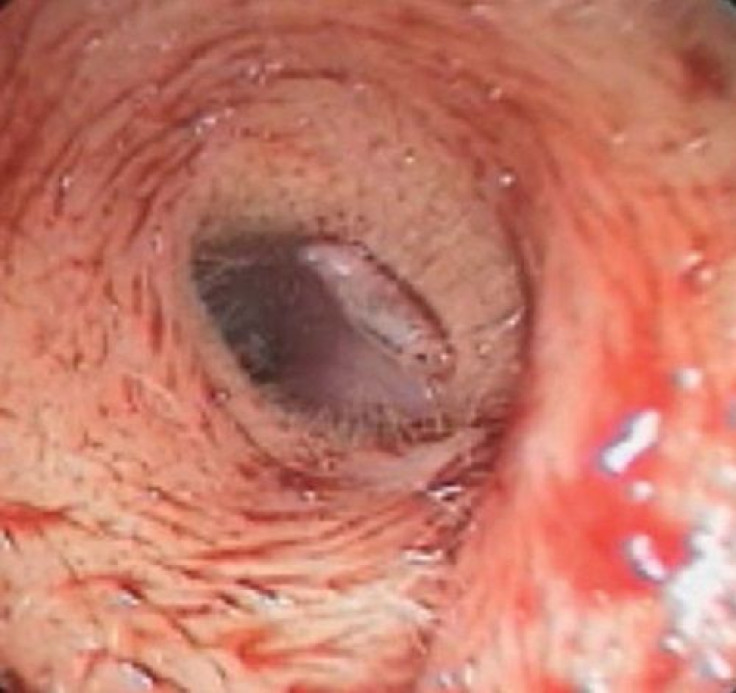Fruit-Fly Infestation: Taiwanese Woman Discovers Larva Living Inside Her Ear [VIDEO]

Take a quick second to think about the kinds of flies that may cause an infestation in your body. Yeah, there are botflies, screw-worm flies, and other flies of the exotic type. But surely, the tiny fruit flies that hang around our bananas all day would do no harm, right? Wrong. A Taiwanese woman recently learned that the earache she had been suffering from was caused by a fruit-fly larva living beneath her hearing aid.
Writing about the uncommon infestation in the New England Journal of Medicine, Dr. Cheng-Ping Shih from the Tri-Service General Hospital describes a 48-year-old woman who visited the emergency room after feeling severe pain in her ear for at least a day. Upon removing the hearing aid, doctors saw that bloody fluid had accumulated in her ear, and that it was caused by the living larva. “The skin over the floor of the auditory canal, close to the eardrum, was eroded,” Shih wrote, according to NBC News.
Shih told NBC that the skin in the woman’s ear had become less sensitive from wearing her hearing aid so often, which could have contributed to a warmer environment in the ear — a perfect home for fly larvae. Naturally, the doctors first had to record a video of the larva, wriggling up and down the ear canal, before they removed it. Her pain quickly went away, and after two weeks of topical antibiotics, her ear canal had healed.
Although it’s common for bugs and other animals to infest human body parts in tropical climates, they rarely involve fruit flies. According to Dr. Richard Nelson, an emergency medicine physician at Ohio State University Wexner Medical Center, the most common type of bug to infest human ears is cockroaches, which tend to get into the ear while the human sleeps. “They tend to run toward small, dark places, which fit the description of the ear,” he told LiveScience.
Doctors usually use forceps, or some an irrigation technique with water or saline, to remove the insect. But when that doesn’t work, a patient might need surgery. Such was the case for one British woman who discovered that she had eight screw-worm fly maggots crawling in her ear after a trip to Peru. An infection caused by fly larvae is known as myiasis, and they don’t only occur in the ear, according to the Centers for Disease Control and Prevention (CDC). They can also infest open wounds or burrow into skin when someone walking with bare feet step on soil containing fly eggs.
The CDC says that anyone traveling to a tropical area and who plans on spending a lot of time outside should cover their skin to lower their risk of bites. In areas that myiasis is known to occur, people should also sleep with window screens and mosquito nets. Finally, if clothes are left out to dry, they should be ironed before being worn.
Source: Feng H, Shih C, et al. An Unusual Auricular Foreign Body. The New England Journal of Medicine. 2014.



























